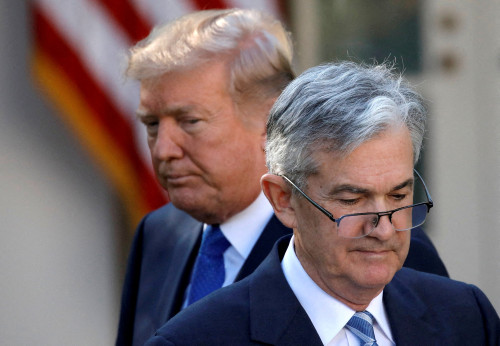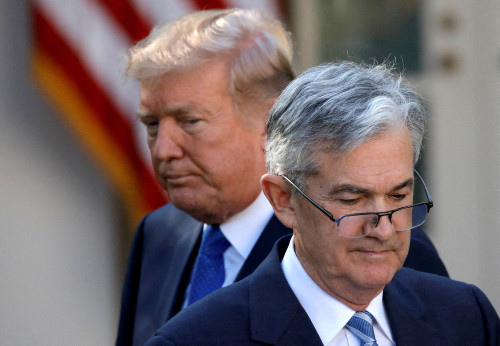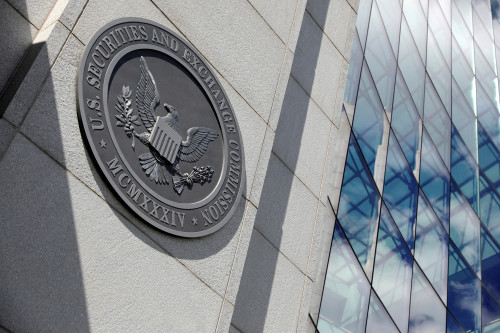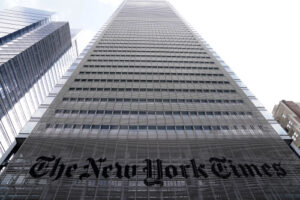By Howard Schneider
WASHINGTON (Reuters) -President Donald Trump’s coming nomination of a new member of the Federal Reserve’s Board of Governors will focus attention on the plans of three others appointed by his predecessor, as well as Fed Chair Jerome Powell himself, who combined could offer a powerful counterweight against any efforts to overhaul monetary policy or the central bank’s operations.
Fed Governor Adriana Kugler’s surprise resignation last week gives Trump a seat to fill months earlier than expected with someone who could serve as a Fed chief-in-waiting until Powell’s term as head of the central bank ends in May, or, should the president elevate Governor Christopher Waller to the job, add another supportive voice to the board.
Trump said he plans to announce a nominee “shortly,” but the move will not guarantee an end to his frustrations with a central bank where policymaking membership turns over slowly by design, and with a decentralized system set up to limit elected officials’ influence.
“Whoever comes in … needs to find agreement among all the decision makers,” said former Fed Vice Chair Donald Kohn, now a senior fellow at the Brookings Institution. “The chair is very powerful. But decisions are made by the board and by the Federal Open Market Committee. The chairman gets other people to sign on by winning arguments, by being right. No one – it doesn’t matter who – is going to have the ability to change things right away. They are going to have to convince people.”
After cutting interest rates three times in the final four months of 2024, including twice after Trump’s election victory, the Fed has held them steady to see how the combination of rising import taxes, an immigration crackdown and tax cuts affects its mandate to keep inflation tame and employment high. Though Fed officials feel the outcome remains uncertain, Trump has viewed the timing of the pause as evidence that Powell and his colleagues are acting politically to sabotage him.
Trump has promised to nominate someone who backs lowering the Fed’s benchmark overnight interest rate, which he wants slashed as low as 1% from the current 4.25%-4.50% range.
Yet for all its cachet, the top Fed position carries only one of seven votes on the Washington-based board when it comes to key internal issues like hiring senior staff, budgeting and overall staffing for a sprawling system. On interest rates and key issues like communications policy, a central Fed tool, the chief has just one of 12 votes on the rate-setting FOMC, which sets policymaker communications guidelines and annually approves a set of operating principles.
Powell’s successor may enter with strong ambitions – one person under consideration, former Fed Governor Kevin Warsh, has talked of “regime change” and “breaking some heads” – but would need support from former President Joe Biden’s appointees, the heads of the 12 regional Fed banks hired by independent directors, and possibly Powell as well should he choose to remain on the board as a governor. Though Powell’s term as Fed chief ends in about nine months, he could remain a governor through January of 2028, toward the end of Trump’s term.
LIMITS
Powell, who speaks frequently about the importance of protecting the Fed’s independence, has not said yet what he plans to do. Traditionally, Fed chiefs have not stayed on as governors.
For the rest of Trump’s presidency, those who would need courting by Powell’s successor include Fed Vice Chair Philip Jefferson, Governor Lisa Cook and Governor Michael Barr, all Biden appointees. Assuming none of them resigns, each has a term running to 2032 or later.
Should Powell remain, their votes plus his would form a board majority, with the ability to influence management and regulatory decisions.
On interest rates, which are set by the governors along with five regional bank presidents as part of the FOMC, they could exert strong influence regardless of whether Powell leaves in May.
With their own seats secure following Senate confirmation, there is also no guarantee that Waller or Vice Chair for Supervision Michelle Bowman, both Trump appointees, would agree with any radical overhaul. Waller in particular has already shot down some ideas floated by people like Warsh to, for example, dramatically shrink the Fed’s balance sheet.
“Really broad changes would be very tough … There are limits to what a new chair could obtain,” said Bill English, a former head of the Fed’s division of monetary affairs and currently a professor at the Yale School of Management. “There are also limits to what a new chair would want to attain. You want good staff that are doing smart work. You want to be successful. You would not want to throw out staff and somehow decide for yourself how the economic modeling should be done. That is not going to help.”
Unlike other independent agency heads, a new Fed chief would also face the verdict of one particularly powerful constituency – a global bond market with enormous scope to set borrowing costs for the U.S. government, businesses and consumers and an ability to make or break a presidential agenda.
Neither Jefferson, Cook nor Barr have spoken about how long they intend to stay in their jobs.
Jefferson, a surprise choice plucked from North Carolina’s Davidson College when he was nominated to the Fed, could stay until 2036, though his term as vice chair ends in September 2027. The term for Cook, who was a Michigan State University economics professor, member of the Council of Economic Advisers under former President Barack Obama, and an adviser to the Biden transition team before joining the Fed, extends to 2038.
Barr stepped down as vice chair for supervision after Trump’s inauguration for a second term in January, but chose to remain on the board. His term runs until 2032.
The unusual breach between Trump and Powell has added to the complexity of the situation. Fed leadership transitions have long been nonpartisan and amicable, not moments for overhauling policy or remaking the institution, a legacy of a system designed to be at arms length from presidential influence.
As noted in a 2024 analysis of the current system’s reformation in the 1930s by Gary Richardson, an economics professor at the University of California, Irvine, and former Fed research director David Wilcox: “The record clearly reveals that Congress wanted the president’s hands far from the levers of monetary policy.”
(Editing by Dan Burns and Paul Simao)







